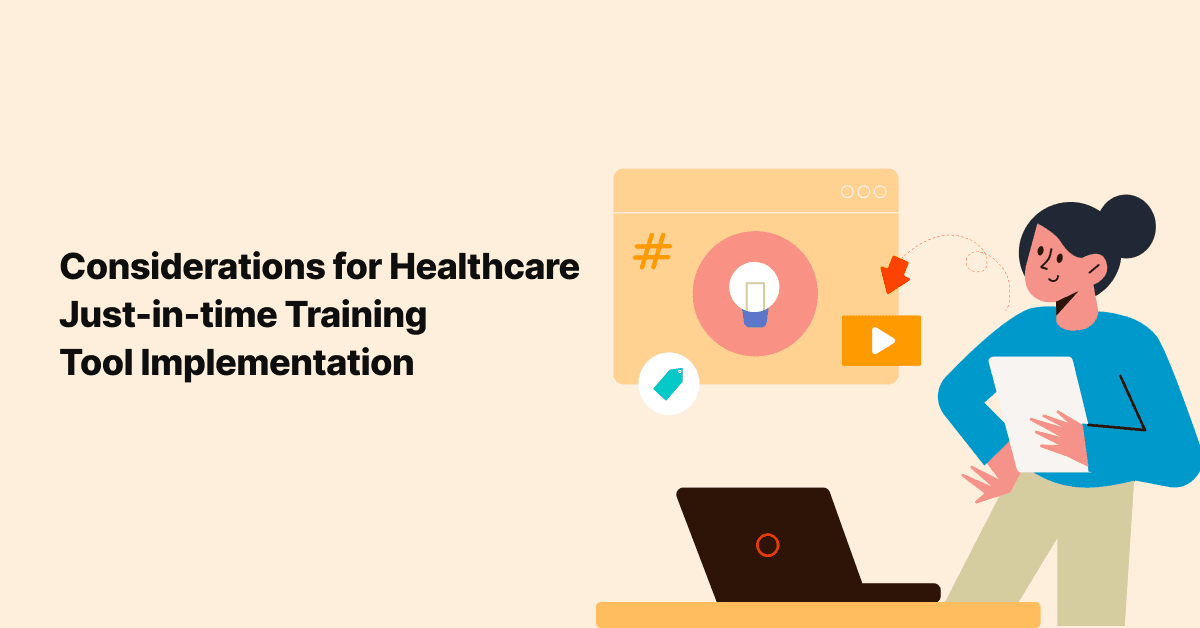
4 Critical Considerations for Just-in-Time Training Tool Implementation in Healthcare
The use of software in healthcare has become all the more prominent with COVID-19. In fact, health information …

Like any other plant we are familiar with, the Chinese Bamboo tree requires the usual nourishment such as water and sunlight, proper soil, and fertilization. What sets this plant apart, however, is that as other plants are sprouting and growing before your very eyes, the Chinese Bamboo has yet to make an appearance. We start to wonder if the seed has actually taken root and begin the process of trying to figure out what went wrong. What we are not aware of, is that underneath the surface, the Chinese Bamboo tree is establishing a complex root system, one that can serve as a solid foundation for the plant to grow with resilience to the outward pressures and environment. As other plants start to wither and die around it, the Chinese Bamboo lives on adequately supported by its root system, resilient and impervious to the conditions implied on it.
As many organizations look to create learning practices they often choose the other plants that tend to show their value early. Taking this approach has benefits such as early returns and short-term gains, however, when organizations take the time to establish a foundation or “root system”, sustainable learning practices will lead to long-term growth. As earlier referred to, this measure twice cut once mentality sets the stage for highly sustainable training and development practices for the organization and for you as a leader. As a catalyst of learning within a learning organization, you have the opportunity to take leadership to the next level. Even if you are not currently in a leadership role, but just want to make a difference leading sustainable learning practices will achieve superior results. This approach to learning and development within your organization can catapult you to a new set of knowledge, skills, and abilities never before experienced.
Everyone has some form of learning and development initiatives within their organizations regardless of whether it’s a one-hour video orientation or a full two-week orientation program that covers every human resource rule and regulation in existence. It could even be as unique as a five-minute list of do’s and don’ts followed by paperwork and then straight to work. The point is, training does not end at orientation. The most successful businesses were those that champion training and development and have leaders at the forefront of the initiative. Leaders advocating for training, driving their people to learn new skills. Take a minute and think about the last training opportunity you were able to take full advantage of. Did you have a conversation with your leader about it? More often than not, when approached by their leader prior to and after a learning event, learners will generally take more out of the content because of the dialogue generated with their leader.
Leaders play an integral part in cultivating the organizational culture, leading the learning initiative is not always simple and easy as there are ample ways to advance learning and development within the organization. It’s agreed that changing culture is challenging even with unlimited resources, how complex can it get with limits on resources and diminishing budgets?
Think about this…how much time and money is wasted fixing errors in reports or creating meetings to gain insight on a new process when it could have been addressed formally and effectively in training. A truly effective learning organization would spend $1K per head to educate their workforce ahead of the change rather than cutting corners, and end up paying more than $3K per head reacting to situations as they come up.
Just like the Bamboo tree, it’s important to nurture our people and to establish the foundational root system which leads to sustainable learning initiatives. Regardless of who we are and what we do, we must all act as this very foundation and passionately advocate for efficient learning on a consistent basis.
Join over 3,200 subscribers and keep up-to-date with the latest innovations & best practices in Healthcare IT.

The use of software in healthcare has become all the more prominent with COVID-19. In fact, health information …

The worlds of technology and medicine probably couldn’t seem further apart, but with the advancements in …

As technology evolves, it is important for healthcare organizations to keep up with the latest trends in order …